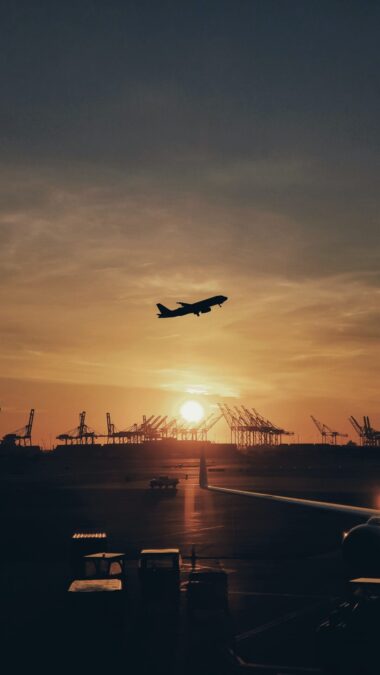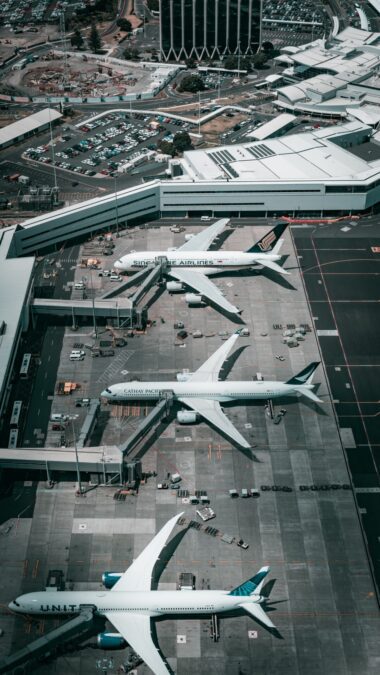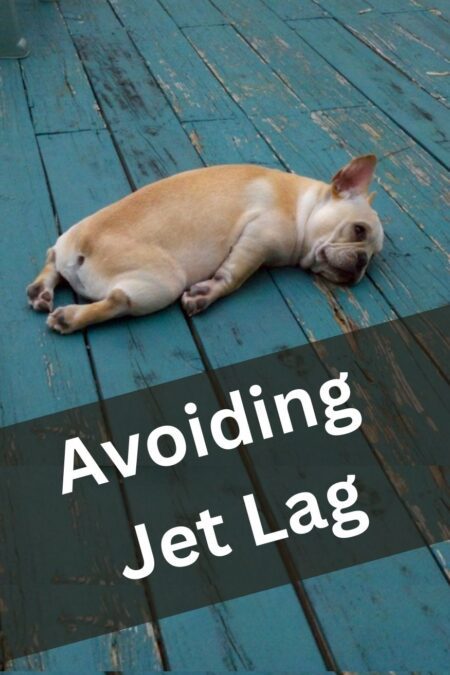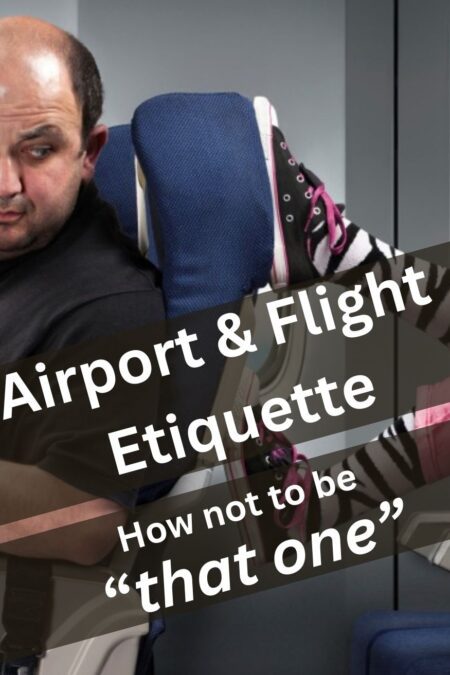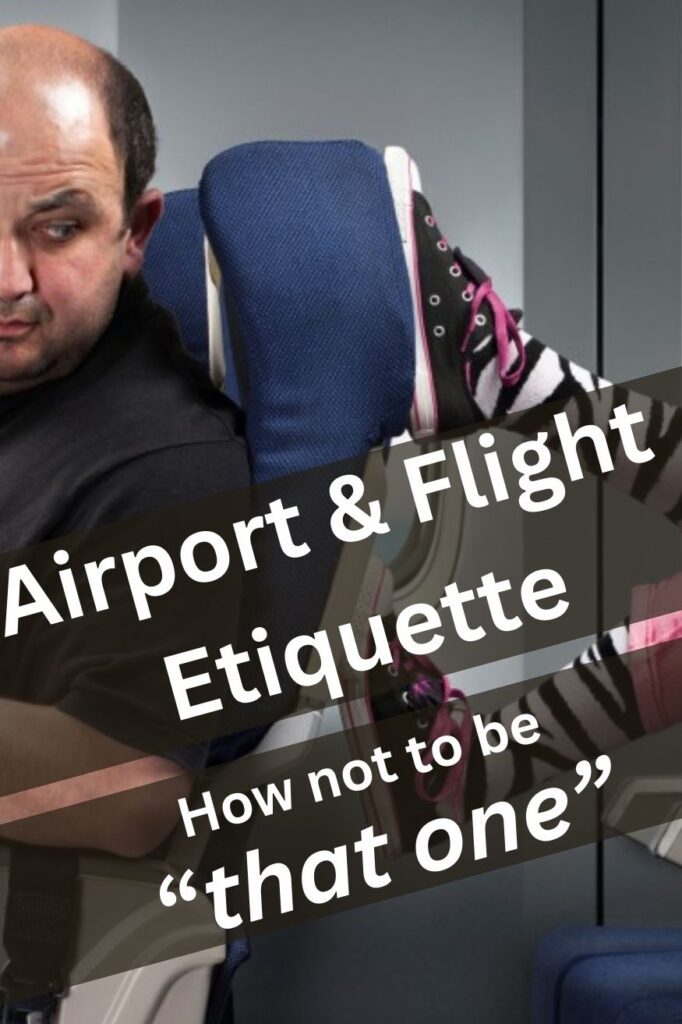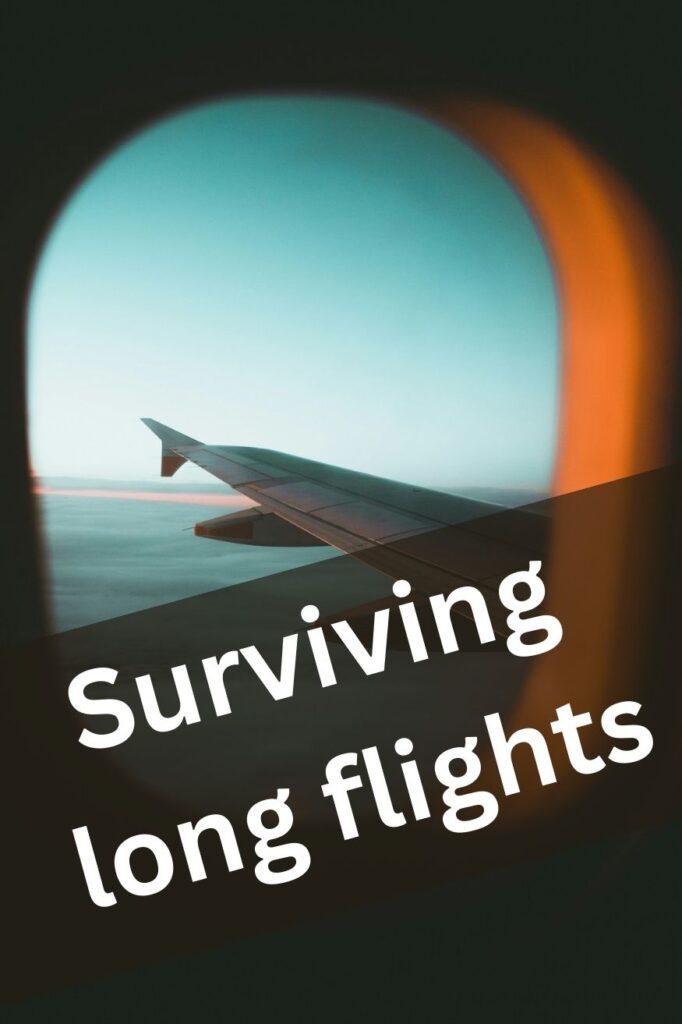Aviophobia, like other phobias, is a serious condition. However, it is relatively rare when compared to the multitude of people who experience a general anxiety associated with flying (estimates place it at 2.5% of the population). Generally speaking, we are all uncomfortable and restless on planes, even the most well-versed flyers, as these are unnatural and we were not built for them.
We’ve all heard the saying “You’re more likely to die in a car accident than a plane crash”, but irrational fears by definition are hard to reason with.
In this post, I will list some common ways to cope with this type of fear and anxiety in general.
*Disclaimer: I have taken many flights ever since I was a child. Even on small planes doing acrobatics over the Nazca Lines, with other passengers feeling sick, or screaming. Sometimes I did experience fear of flying and have had several moments of anxiety, but generally, I would say that I am not scared of flying. Therefore the recommendations that I list here are based on my knowledge and research, and I also include my personal way to cope with it, but they may not be suited for everybody and everyone should do their research and find what works best for them.
Knowledge is power
Knowledge is one of the most useful ways to cope with anxiety. It is often the case that not understanding something makes our brains frantically search for explanations for it, and by design and evolution, we will find the worst possible answers to a question and scenarios. This instinct allowed our primordial ancestors to survive when they heard a rustling of leaves in the bushes and did not explain it away with “It’s just the wind”. In the case of airplanes, though, it makes us irrationally fearful when, in reality, quite literally, it is just the wind.
Understanding the triggers
Anxiety is self-generative and creates a snowball effect, which can quickly overwhelm us.
The first step is to recognize the new problem at hand, and move attention away from the triggers of anxiety and instead deal with the issue of being in an anxious state.
It is also important to name your fear and know what triggers you, as these are powerful ways to take control, which is ultimately what can conquer anxiety (more on this later when discussing mindfulness). If you know what your specific issue is, you can work towards mitigating its effects and have the correct tools to deal with it. If instead you are clueless about what triggers you, you are at the mercy of your emotions, a ship in the storm.
In the case of flying, the reasons may be related to being in an enclosed space with others and potentially surrounded by germs, being at a high altitude, and thinking that someone might open the emergency exit by mistake or that there might be terrorists on board. Also, it is often the case that people have a fear of turbulence after having experienced a very bad flight in their lifetime. The most common type of anxiety, though, is worrying that there will be anxiety, and the prospect of being crammed and stuck in an airplane only serves to increase this.
Counter gut feelings with information
As mentioned previously, understanding things is one of the best tools to stop our minds from conjuring up worst-case scenarios and contain with facts our imaginative thoughts.
Because of this, knowing how airplanes work, is a great way to overcome any fear of flying. You might just become one of those people who are fascinated with aviation, are “experts” on all the different aircraft, and end up even enjoying being on airplanes. You might get to know statistics on how an aircraft must be able to support one-and-a-half times the maximum load or how they are built to weather environmental extremes such as 120-degree temperatures.
Examples of knowledge include familiarizing yourself with airplane noises and knowing what each one is caused by.
Another example is to get to know the safety info. Watching an airline safety video while you’re still in the comfort of your home allows you to “master” the procedure in your head.
You could also take a flying lesson to get to learn firsthand what it all entails and eliminate the mystery.
This is also useful for other points, such as exposure therapy which I will mention later.
Common techniques to deal with anxiety
Mindfulness – get into your head
Mindfulness is having awareness of what you are experiencing and meta-awareness that you are being aware. It is living in the present moment and, most importantly, talking and listening to yourself.
By taking control through your mind rather than listening to your gut feelings, which can play tricks on you, you can separate fear from danger, and manage your fight-or-flight responses.
It is easier said than done, though, since our body reacts exactly in the same way to danger and anxiety. It requires training and practice, usually through meditation, to achieve this capacity of telling yourself that you are overreacting and not listen..to yourself.
This is also where breathing techniques come in handy. Taking deep breaths, especially long exhales, lowers your heart rate, potentially reducing hyperventilation and panic attacks. There are several techniques, such as Diaphragmatic (belly) breathing or box breathing which works as follows:
- Breathe in, counting to four slowly. Feel the air enter your lungs.
- Hold your breath for 4 seconds. Try to avoid inhaling or exhaling for 4 seconds.
- Slowly exhale through your mouth for 4 seconds.
- Rinse and repeat
Grounding – get out of your head
This is still a form of mindfulness but projected outwards. Grounding allows you to center by getting in touch with your body instead of focusing on your thoughts.
If you focus on your surroundings and listen to your perceptions and senses, you are often able to escape the imprisonment in your mind that anxiety usually brings.
Examples of this would be concentrating on smells, sounds, and what you feel in your own body. If coupled with relaxation and breathing techniques, this helps to shift your attention to the present moment.
In the specific case of flying, focusing on looking at yourself as if you were an external observer and being aware of your body can help you counteract some instinctive behaviors that heighten anxiety, such as clinging to the chair’s armrest.
Exposure Therapy
Face your fear might sound like an arrogant suggestion made by someone who doesn’t know what it’s like. Something akin to the saying “Just walk it off”.
The fact is, though, that exposure therapy is a provenly successful way to cope with phobias – avoidance makes things worse, but coming into contact with the triggers and sources of fear helps reduce the exaggerated responses we have towards them.
The idea is to expose yourself, gradually and in increments, to the fear. By doing this in small steps, you are conditioning your brain to get used to the fear stimulus. The limbic system isn’t triggered as quickly, and your fight-or-flight response is less strong.
When it comes to flying, examples of this might be:
- Watching YouTube videos of planes flying and taking off (and stay away from videos of plane crashes)
- Listening to audio of a flight in turbulence.
- Going to the airport and watch planes take off.
- Getting on a plane, or if your discomfort is really strong, consider virtual reality while remaining steadily on the ground.
- Airlines also offer flight training, which is quite expensive, but is made exactly for this: training you to deal with the unknown and out-of-ordinary experience of flying.
Guided imagery
This is just another way of saying “Go to your happy place”. Mentally going somewhere else – a place that is safe for you – is a good way to deal with anxiety and can be used to calm you down and lower this self-feeding cycle. It is even more effective if coupled with breathing techniques.
In the case of flying, if on a leisure trip, you could also envision what awaits you and remind yourself of why you are on that trip. If kept in a positive light, mentally visualizing and thinking about the wonderful place you will be in, can also build anticipation for the destination and increase its significance. What awaits you might potentially become a wonderful memory and a new “happy place” to go to in the future.
Use distractions
I mentioned grounding, mindfulness, and imagery. These are excellent ways to deal with anxiety, but they still keep it front and center, giving it respect and attention. Sometimes the best way is just to ignore it, which is easy in today’s society where we have so many things that can distract us.
Challenging and engaging distractions activate the rational, problem-solving brain and are a great way to silence the emotional part of the brain. A book that you are already engrossed in, for example, can help a lot and transport you to another world of imagination for hours, and you will land without even noticing it. Taking out your laptop, writing emails (even better if you use in-flight WiFi, and are actually connected to the outside world), and doing crosswords and puzzles are also excellent ways to “keep you busy” and out of your thoughts.
“Brainless” distractions also work, though. For example, in-flight entertainment helps as it creates a sense of safety because we normally watch movies and TV shows in the comfort of our homes, and this subconsciously brings us to our happy place.
Exercising on board also requires very little effort and reduces stress (and is generally good for your health as mentioned in this other article on Surviving Long Flights)
See a therapist and use medications
Seek professional help if your fear is truly paralyzing. By being guided by a professional with methods like CBT (Cognitive behavioral therapy), or ACT (Acceptance and commitment therapy), you can develop better coping mechanisms, and understandings of the psychological roots of issues.
Mental health professionals can also prescribe anti-anxiety medication, which is a quick-acting way to deal with the fear of flying. While relying on medication may not solve your problem long-term, drugs such as Xanax or Valium are specifically made to deal with anxiety. Some consequences of these treatments though, are counterproductive to flights, as they might leave you confused and tired, which in case of long flights can exacerbate the feelings of jet lag (for more info see this guide on how to mitigate Jet Lag), but again, they definitely work.
It goes without saying, but whatever you do, don’t self-medicate or mix prescription pills with alcohol.
I believe that these should be used as a last resort, and not taken mindlessly. Often, the comfort of just knowing that there is a “magic pill” that you can take in case of emergency is comforting enough – and you can have the benefits without the side effects. Similarly, you could also try lighter remedies such as homeotherapy, for example, Aconite, St. John’s wort, Bach flower remedies, or simply camomille tea.
Fight fire with fire
Not for the faint-hearted, but when shit hits the fan, and everything else fails, irrationality itself can be a powerful tool.
You talked to your inner self and explained how their common sense makes no sense. Are they still afraid? Well, two can play this game. Go full-blown superstitious, invoke the gods, and even go as far as accepting and embracing the worrying thoughts.
As mentioned previously, anxiety is self-generative and feeds on itself. A last resort is to not fight it, to not micromanage this tug of war, but fundamentally to lose to it. By embracing what is controlling you, you can take back that control, and much of the power that it has over you will suddenly disappear.
One example of this could be to accept the absolute fatality. Flying is the safest transport method there is, but when accidents happen, they are often fatal for everyone on board. It is sort of like nuclear energy: it is the safest solution, except when it’s not. It is either “plane is up” or “plane is down”. You have already jumped in with both feet on the aircraft and there is nothing else to do.
As said, this is certainly not healthy, but the advantage of this fatalistic view is that it gives back control. As uncomfortable (and fundamentally untrue) as it might be, creating this inner narrative of ultimately being powerless, or having nothing to lose, allows you to rise above any feelings, because they ultimately cannot control you.
Tips specific to flying
Do not fear turbulence
Turbulence is naturally unsettling, and even the most well-versed flyers will suffer from it, especially if frequent and incessant. As mentioned at the beginning when discussing knowledge, though, rationalizing it is important.
Turbulence is part of flying. It happens when the plane encounters normal weather patterns like air currents or clouds. Much like when driving on a bumpy road, if you’re in the passenger seat, you might get surprised (especially if sleeping) by a sudden pothole. But there is no need to worry. The bending and flapping of airplane wings are meant to absorb turbulence, just like shock absorbers in cars.
Also, with today’s technologies, weather patterns that cause turbulence can be seen beforehand, allowing pilots to avoid them (unless they are on a mission to save fuel or time and just fly through them). As passengers, we can also predict turbulence with apps such as Turbcast. By seeing upcoming air pockets and thunderstorms that cause turbulence, we can be prepared for them. This knowledge is very powerful in reducing sudden (and again, unexpected, thus fear-inducing) surprises.
Choose the right seat
On most flights, passengers can choose their seating and this can be very useful to cope with fear of flying. Once you have identified what exactly you’re afraid of, you can pick a seat that compensates for it. For example:
- If you need to know what is going on outside, pick the window seat.
- If instead you’re afraid of heights or you feel claustrophobic, pick the aisle where there is more space and legroom. The aisle (or center row on larger planes) also reduces the sensation of banking when the plane turns. Also, the seats near the emergency exits have extra-wide legroom (but you will receive a brief, additional, safety briefing from the flight attendants on what to do in case of emergency, which might not be your cup of tea).
- If all the unknown noises bother you, or you just want to sleep through the flight, pick the front of the airplane which receives less engine noise.
- If turbulence bothers you the most, try to find a seat close to the wings, where the center of mass is.
- If disaster is your main concern, the back is statistically the safest place, although it tends to provoke a stronger feeling of being tilted upwards.
Talk to your flight attendants
Flight attendants are clearly not only there to provide service, but also, and most importantly, to guarantee the safety of the passengers. They are also trained to provide medical attention and handle issues with passengers such as fainting, hyperventilation, and panic attacks, as well as various health incidents. So remember that you’re in good hands.
Also, ask any questions you may have on safety protocols and let them know of your discomfort, and they will support you. Sometimes just knowing that others are available to help you in case your anxiety surfaces is enough to help keep that anxiety in check.
Watch out what you eat and drink
It might seem that a pre-flight drink can smooth out the trip and give some relaxation, but the opposite is true. Alcohol at altitude has stronger effects on us, making us restless and dehydrated.
Instead, opt for water, as remaining hydrated will keep your energies high and help deal with the dry air cabin.
As mentioned in the guide on how to survive long flights, what you eat also plays an important role in managing the discomforts of flying. Having a light pre-flight meal with low carbohydrates will increase your chances to sleep on board. Carrying light snacks keeps you nourished and is also a minor distraction.
Also, it should go without saying, but coffee is not your friend here. The stimulant properties of caffeine contribute to and increase nervousness and anxiety levels.
Other tips (when it is not so severe)
- Try to sleep, especially on long flights. As much as it is uncomfortable to sleep while sitting in a crammed airplane cabin, the light turbulence, with its rocking motion and the constant buzzing sound of engines, can create perfect conditions for a nice sleep-like-a-baby nap.
- Chat with your neighbor to distract yourself, but be mindful of flight etiquette, as they may also have their discomforts and not want to be annoyed, or generally want to have a quiet flight (for further info, check out this article on airport and flight etiquette).
- Despite having said earlier that alcohol is not a good way to deal with anxiety, if you do not have a strong fear about flying but rather a minor discomfort (as mentioned previously, it is certainly an unusual situation that, as humans, we are not built for), a drink can help. It will probably leave you with a hangover, but a pleasant buzz can easily distract you.
Closing Thoughts
When it comes to fear of flying, it is important to remember that it is common to many people and that there are several ways to mitigate it. Seeking social support, distracting yourself with music, movies, toys, and books, using relaxation techniques such as mindfulness and visualizations, taking medication, and learning the ins and outs of aviation are only some of the ways to cope with this widespread anxiety.
Like so many other aspects of life, flying is a matter of having the right approach and mindset. It too, can be learned, just like anything else.
